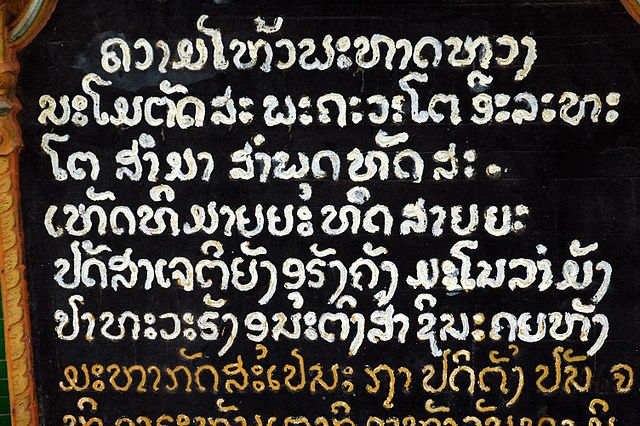Photisarath, son of King Visoun of Lanxang, is considered to be the most devout of the Lao kings. He banned spirit worship and built temples upon the sites of spirit shrines. His elephant fell and crushed him while he sought to display his prowess to the diplomatic corps. His son Setthathirath returned from Chiang Mai to succeed him to the throne of Lan Xang.
That Phanom, then part of Lan Xang, enhanced by Photisarath in 1539 during a pilgrimage
Lao, sometimes referred to as Laotian, is the official language of Laos and a significant language in the Isan region of northeastern Thailand, where it is usually referred to as the Isan language. Spoken by over 3 million people in Laos and 3.2 million in all countries, it serves as a vital link in the cultural and social fabric of these areas. It is written in the Lao script, an abugida that evolved from ancient Tai scripts.
Wat Phra That Phanom in Nakhon Phanom. Built in the 16th century over earlier Khmer ruins when Isan was part of Lan Xang, the temple is an important place of pilgrimage, attracting Lao from Laos as well as Isan to its temple festivals.
Temple mural of Wat Photaram in Maha Sarakham Province. Dating to the reign of Siamese Ruler Rama III (1788–1851), the writing is in the Tai Noi script, an old form of the Lao alphabet.
A bilingual Lao-French street sign in Vientiane. Although the influence of French on the Lao language has waned considerably, hundreds of words of French origin are used in Laos.
Lao script on a sign at Wat That Luang, Vientiane.





